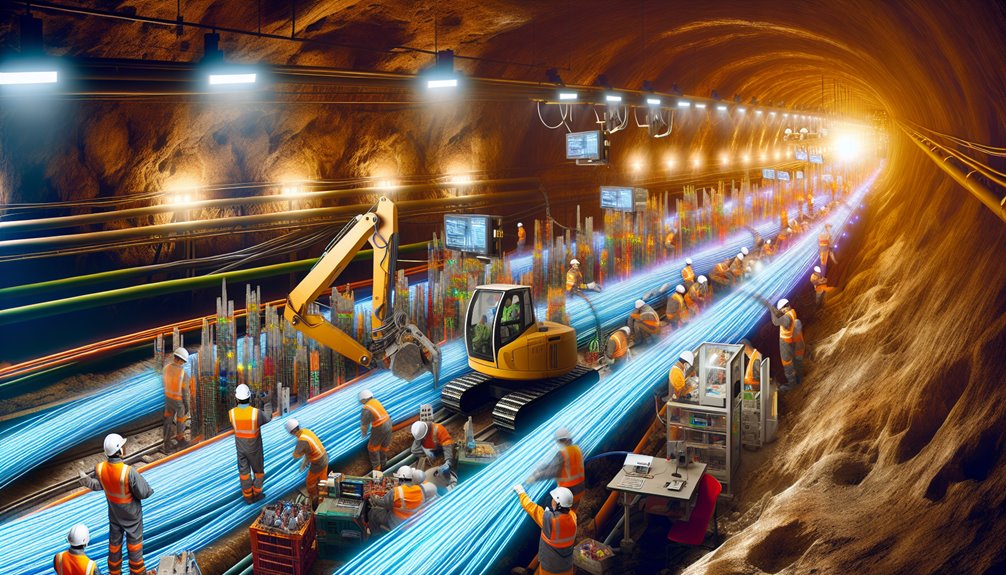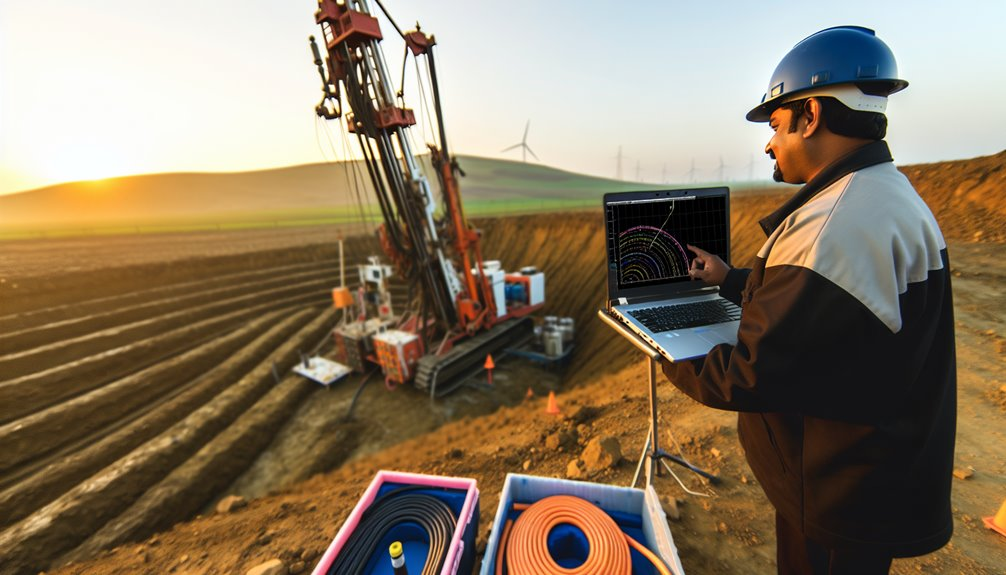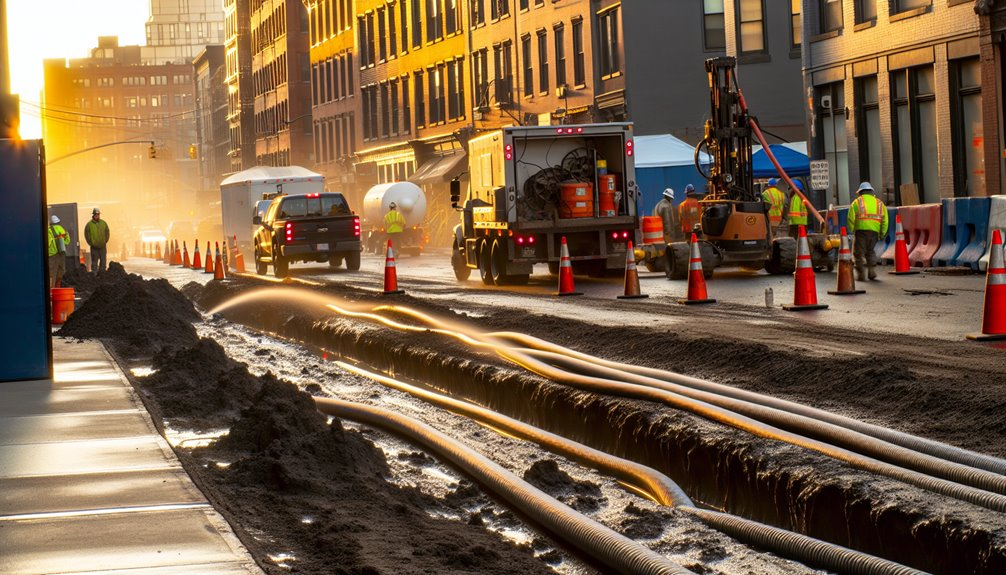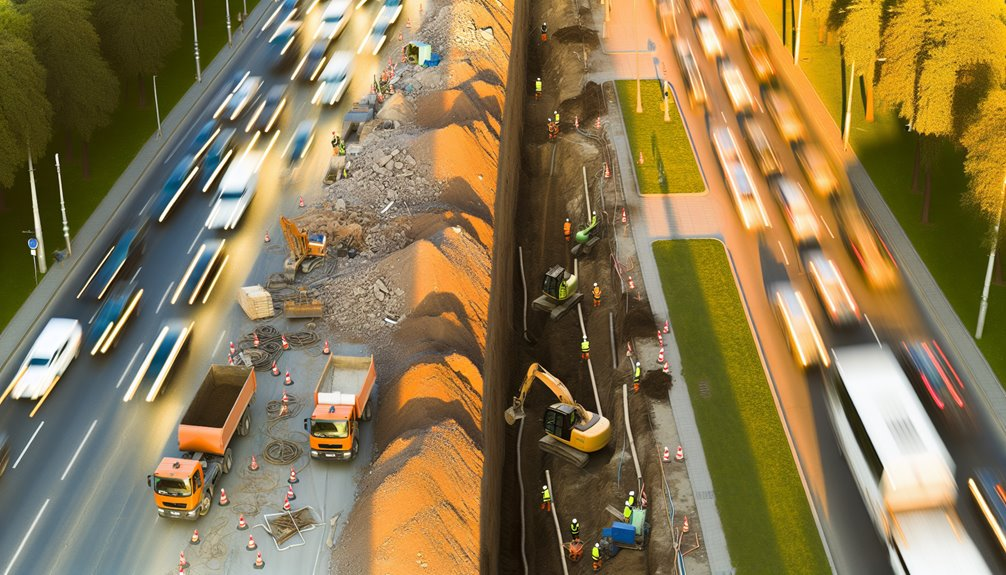As you explore the evolving landscape of underground utility construction, you'll find that GIS and advanced mapping technologies are pivotal. These tools not only enhance the detection of existing infrastructures but greatly reduce the risk of costly errors during excavation. By leveraging precise location data, you guarantee that your projects align with stringent industry standards and regulatory requirements, paving the way for smoother, more efficient operations. Consider how integrating these technologies could transform your approach to utility installation, potentially setting new benchmarks in the sector.
The Role of GIS and Advanced Mapping in Utility Detection
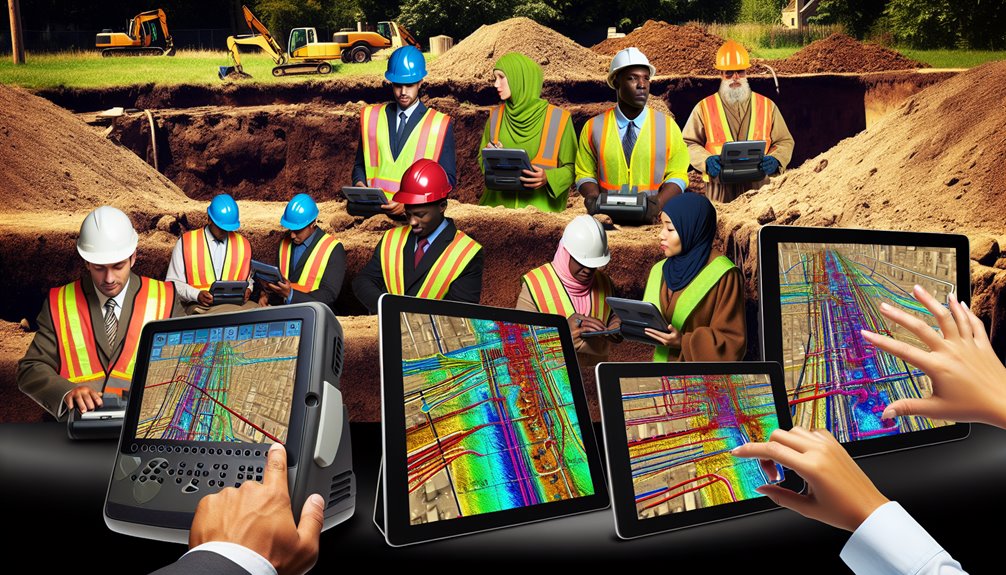
To optimize underground utility detection, integrating Geographic Information Systems (GIS) and advanced mapping technologies is crucial.
You'll find that GIS applications greatly enhance mapping accuracy by synchronizing GPS data, utility records, and real-time locational updates. This results in detailed 3D models that clarify the depth, type, and precise location of underground networks.
By leveraging extensive GIS databases, these models incorporate historical data and construction blueprints, increasing the reliability of the mappings. This integration enables engineers to avoid damages to underground utilities during construction, enhancing safety and reducing costs.
This integration not only boosts your site safety and operational productivity but also empowers you with visual tools for strategic planning and decision-making.
Embrace these innovative mapping solutions to guarantee superior accuracy and efficiency in your utility detection efforts.
The Advancements in Trenchless Technology for Minimal Surface Impact
You'll find that Horizontal Directional Drilling (HDD) and Microtunneling are pivotal in modern trenchless technology, offering significant advantages over traditional methods. HDD allows for the installation of utilities beneath obstacles with minimal surface disruption, leveraging specialized drilling rigs to navigate subterranean paths efficiently. Similarly, Microtunneling uses a remotely operated microtunnel boring machine (MTBM), enabling precise underground placements that drastically reduce surface and environmental impact. These methods align with the industry's shift towards environmental friendliness, focusing on reducing excavation and lessening ecological disturbances.
Horizontal Directional Drilling
Horizontal Directional Drilling (HDD) represents a notable leap in trenchless technology, enabling minimal surface impact during underground utility construction.
You'll find that the integration of advanced drill bits and sophisticated navigation systems considerably bolsters drilling efficiency and environmental sustainability. These state-of-the-art components not only minimize the risk of inadvertent returns but also enhance the precision of underground pathways, thereby safeguarding natural habitats and the integrity of existing utilities.
Moreover, the deployment of mud recycling systems and the use of eco-friendly drilling fluids reduce environmental impacts.
These innovations not only preserve ecological balance but also cut operational costs by optimizing resource utilization. By embracing these advancements, you're not just adhering to industry standards but are also championing sustainable development in utility construction.
Microtunneling Techniques Explored
As the construction industry seeks more sustainable and less invasive methods, microtunneling has emerged as a pivotal technology. You'll find its integration enables precise underground utility installation with minimal surface disruption.
Here are some critical advancements:
- Ultra-precise control sensors and progressive mechanisms improve accuracy in soil and water loadings.
- Enhanced geological condition applicability allows operation in diverse environments, from sandy to rocky soils.
- Technologies like UV light curing and ground-penetrating radar expedite processes and enhance precision, respectively.
Microtunneling benefits include efficiency and minimal landscape impact, while challenges lie in managing complex soil conditions and integrating high-tech equipment.
You're witnessing a transformative approach that marries innovation with environmental stewardship, reshaping how underground construction projects are executed.
The Impact of AI and Machine Learning on Project Accuracy
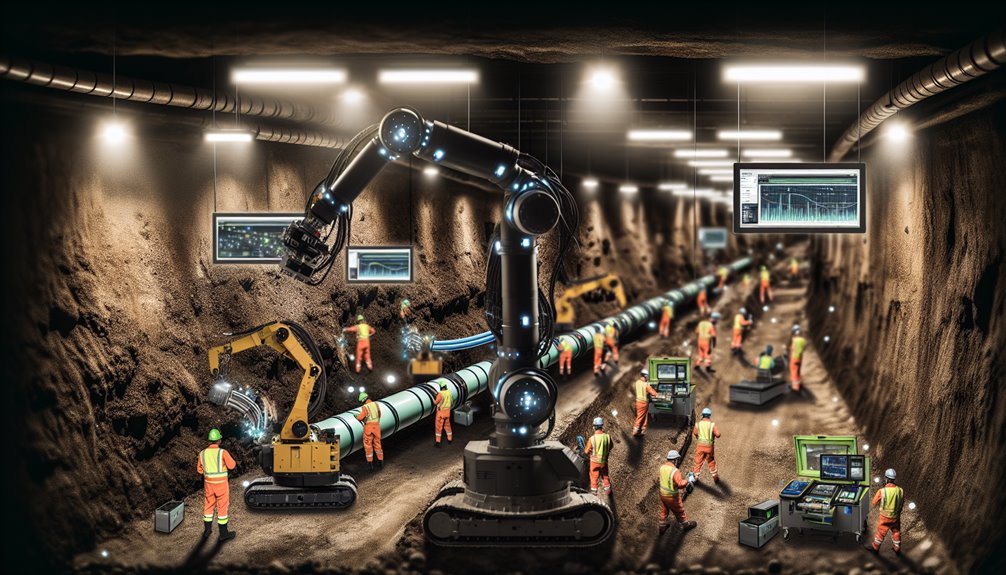
While artificial intelligence (AI) and machine learning dramatically reshape underground utility construction, their most profound impact lies in enhancing project accuracy.
You'll find that AI optimization streamlines the planning and design phases, greatly reducing errors and time expenditures. Machine learning algorithms process vast datasets, encompassing soil conditions and existing infrastructure, to generate precise designs and predictive models. This not only optimizes your approach for each project but also minimizes costly construction errors.
Additionally, AI-driven tools like Exodigo offer pinpoint accuracy in mapping underground utilities, drastically lowering the risk of accidental strikes.
The Use of Robotics in Underground Utility Installations
Robotic technologies are revolutionizing underground utility installations, enhancing both precision and safety with groundbreaking capabilities. These advancements aren't just theoretical; they're practical, forcefully pushing the boundaries of what's possible in infrastructure development.
Consider how these key innovations in robotic excavation and autonomous mapping are shaping the industry:
- Robotic Excavation: Utilizing systems like the Robotic Roadworks and Excavation System (RRES), which employs core and vacuum excavation methods for precise, efficient operations.
- Autonomous Mapping: The AUSMOS platform integrates ground-penetrating radar and electromagnetic sensors, producing high-resolution 3D underground maps, even in GPS-denied environments.
- Thermal Spallation Drilling: This technique allows robots to bore through tough materials like Sioux quartzite, streamlining the creation of microtunnels without physical contact.
Embrace these innovations; they're transforming how utilities are installed below our feet.
Safety Enhancements Through Technology in Underground Construction
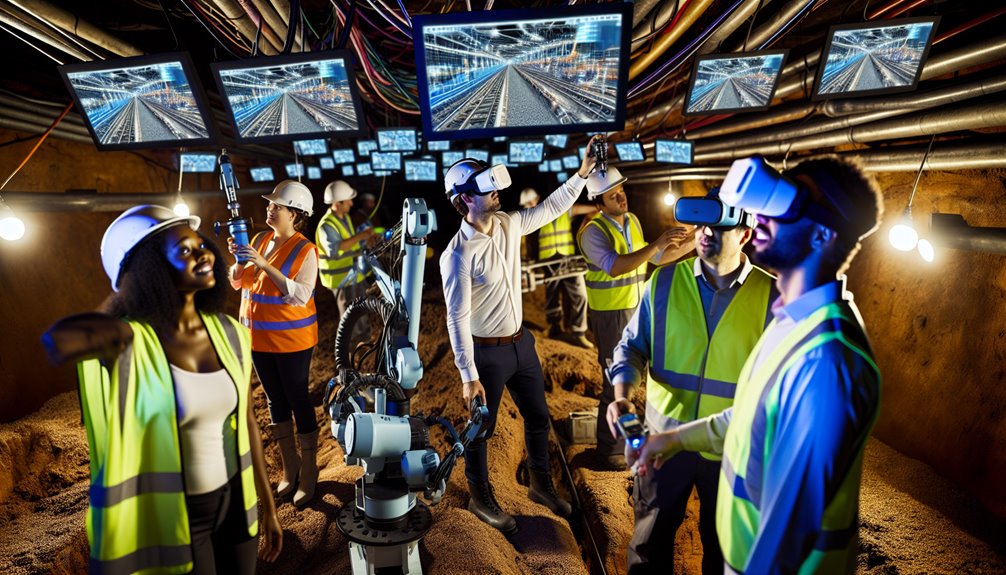
To enhance safety in underground construction, implementing advanced technologies is essential.
You'll leverage state-of-the-art tools like 3D utility mapping and augmented reality (AR) to boost subsurface visibility, vital for precise excavation planning.
This technology integration streamlines pre-excavation processes, including utility detection and data management through GIS databases and BIM models.
Future Trends and Innovations in Underground Utility Technologies
Building on the foundation of safety enhancements through advanced technologies in underground construction, the sector now stands on the brink of transformative advancements.
You'll witness significant shifts including:
- Smart materials and digital twins: These are pivotal in advancing the longevity and resilience of infrastructure. Smart materials adapt to environmental changes, enhancing durability and functionality.
- Advanced modeling techniques: Utilization of 4D BIM and AI-driven analytics allows for predictive maintenance and better risk management.
- Innovative construction methods: Techniques like Horizontal Directional Drilling (HDD) and the use of swarm robotics revolutionize traditional excavation processes, reducing environmental impact and improving efficiency.
Embrace these innovations to stay at the forefront of underground utility construction, ensuring sustainability and resilience in your projects.
Conclusion
As you integrate GIS, AI, and robotics into your underground utility projects, you'll experience unprecedented precision and efficiency. These technologies not only reduce surface disruption through trenchless methods but also enhance safety and accuracy with advanced mapping and autonomous systems. Moving forward, staying abreast of emerging smart materials and digital innovations will be essential in maintaining resilience and sustainability in your infrastructure endeavors. Embrace these advancements to guarantee your projects are both cutting-edge and environmentally responsible.
If you're curious to learn more about how these technologies can transform your projects, I invite you to visit Boring Bros at boringbro.com or give us a call at (954) 639-6167. We're here to help you navigate the exciting world of underground utility construction and ensure your projects are innovative and efficient. Let's work together to make a positive impact!

